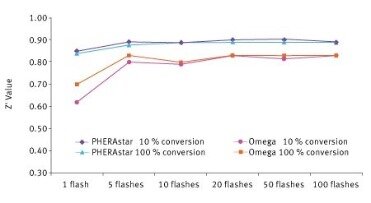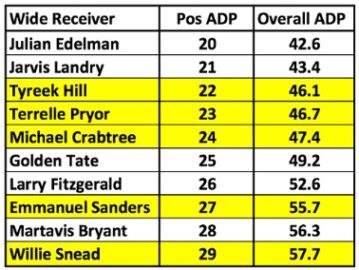Medicare Tax Go Up In 2022 Medicare tax rate in 2022

You earn $175,000 and your spouse earns $100,000, bringing your combined income to $275,000. Since your combined income is above the $250,000 threshold, you’ll be liable for the additional 0.9% Medicare tax. The Medicare tax is a tax charged to individuals in order to fund the Medicare system. The tax is charged to people on their paychecks, much like the Social Security tax.
- The Additional Medicare Tax applies at a rate of 0.9% of all eligible Medicare wages above the threshold for your filing status.
- These two laws reformed the health care market by requiring individuals to obtain health insurance or pay a tax penalty.
- You must also withhold the additional 0.9 percent Medicare tax on any other wages paid to Trevor in December 2022.
- If an employee’s withholding is miscalculated and they are owed a refund, the employee must request the refund directly from the IRS.
Married filing jointly — $250,000,Married filing separately — $125,000,Single or head of household — $200,000, orQualifying widow(er) with a child — $250,000. In addition to the Medicare Tax, there is also the Net Investment Income Tax an individual or couple must pay if their respective incomes are over $200,000 and $250,000. If you’re hungry for more must-have additional Medicare tax information, check out the IRS website.
Commuter benefits limit
The threshold for an individual’s filing status applies separately to these categories of earnings. Income that is subject to RRTA taxes, and wages subject to Medicare and Social Security aren’t combined to determine Additional Medicare Tax liability. The Additional Medicare Tax applies when a taxpayer’s wages from all jobs exceed the threshold amount, and employers are required to withhold Additional Medicare Tax on Medicare wages in excess of $200,000 that they pay to an employee. The same threshold applies to everyone regardless of filing status.
However, your employer will still withhold the tax from your paycheck on wages over $200,000. Any tax withheld from your paycheck that you’re not liable for will be applied against your taxes on your income tax return. You should consider your estimated total tax liability in light of your wages, other compensation, and self-employment income, and the applicable threshold for your filing status when determining employee benefits whether estimated tax payments are necessary. If an employer underwithholds Additional Medicare Tax and does not discover the error in the same year wages were paid, the employer can not correct the error by making an interest-free adjustment. In this case, the employer should have reported the amount of Additional Medicare Tax withheld, if any, on the employee’s Form W-2 for the prior year.
After then, the employer keeps withholding it from each pay period until the conclusion of the calendar year. A self-employment loss is not taken into account while calculating this tax. Compare the threshold with the railroad retirement (RRTA) compensation individually. Typically, you’re responsible for paying half of this total Medicare tax amount (1.45%) and your employer is responsible for the other 1.45%. Your Medicare tax is deducted automatically from your paychecks.
Medicare Tax Rates
You and your spouse’s combined income ($300,000) is more than $250,000. So, you’ll be liable for the additional 0.9% Medicare tax. However, neither of your employers will withhold the tax since each of your wages is less than $200,000. So, you should make estimated tax payments and / or request additional withholding on Form W-4.
At the end of each year, policymakers face a series of expiring tax provisions that are typically extended on a temporary basis, setting up a recurring and almost ritualistic tax extenders season. Get money-saving tips, hard-to-find info and tactics for a successful retirement in our free weekly newsletter. Erika Rasure is globally-recognized as a leading consumer economics subject matter expert, researcher, and educator.
How FICA tax or withholding tax are calculated?
The Medicare tax rate is 2.9% which is split between the employer and the employee. The couple is required to pay 3.8% tax on the lesser of the excess MAGI ($25,000) or the total amount of investment income ($50,000). In this case, the couple would owe a net investment income tax of $950 (3.8% x $25,000). An employer calculates wages for purposes of withholding Additional Medicare Tax from nonqualified deferred compensation (NQDC) in the same way that it calculates wages for withholding the existing Medicare tax from NQDC.
Health Care’s Intertwined Colossus – The American Prospect
Health Care’s Intertwined Colossus.
Posted: Wed, 02 Aug 2023 09:41:07 GMT [source]
The tax funds are used for Medicare Part A, which covers hospital insurance for senior citizens and those living with disabilities. Part A costs include hospital, hospice, and nursing facility care. In 2020, the Coronavirus Aid, Relief, and Economic Security (CARES) Act expanded the Medicare program to cover treatment for individuals affected by the COVID-19 pandemic. This included increased Medicare payments for hospital stays and durable medical equipment related to COVID-19.
Calculating the Additional Medicare Tax withholding amount
American workers have taxes for Social Security and Medicare withheld from their paychecks. Together, these two income taxes are known as the Federal Insurance Contributions Act (FICA) tax. In many cases, FICA was referred to as payroll tax because employers generally deduct FICA Tax on wages and send it to the IRS for reimbursement. There is no employer match for the additional Medicare tax.
Unlike the uncollected portion of the regular (1.45%) Medicare tax, an employer may not report the uncollected Additional Medicare Tax in box 12 of Form W-2 with code N. An employer is required to withhold Additional Medicare Tax on wages paid to an employee in excess of $200,000 in a calendar year. Generally, if you provide wages in excess of the $200,000 withholding threshold to the employee leasing company to pay to an employee that performs services for you, Additional Medicare Tax should be withheld from the wages in excess of $200,000. Taxpayers should be aware that the employer is ultimately responsible for the deposit and payment of federal tax liabilities.
However, an employee who anticipates liability for Additional Medicare Tax may request that his or her employer withhold an additional amount of income tax withholding on Form W-4. This additional income tax withholding will be applied against all taxes shown on the individual’s income tax return (Form 1040 or 1040-SR), including any Additional Medicare Tax liability. Employees who ask you not to withhold the additional Medicare tax are out of luck. You must withhold the tax on wages over $200,000 regardless of whether the employee will owe the tax or not. Instead, employees who file jointly and won’t meet the $250,000 threshold can claim a credit when filing their individual income tax return.

Together they form a Federal Insurance Contribution Act tax. Generally, you have to pay half the total Medicare tax (1.25%). The number that employees arrive at when they calculate the Additional Medicare Tax on their tax returns may or may not match up with what was withheld from their earnings.
Calculating the Additional Medicare Tax
An employer will enter the total employee Medicare tax (including any Additional Medicare Tax) withheld on Medicare wages and tips in box 6 (“Medicare tax withheld”). A railroad employer will report Additional Medicare Tax in box 14. Taxes under the Federal Insurance Contributions Act (FICA) are composed of the old-age, survivors, and disability insurance taxes, also known as social security taxes, and the hospital insurance tax, also known as Medicare taxes. Some people are “exempt workers,” which means they elect not to have federal income tax withheld from their paychecks.

Get up and running with free payroll setup, and enjoy free expert support. Try our payroll software in a free, no-obligation 30-day trial. There are some changes to taxes due to coronavirus (COVID-19), and a person can check for the most recent changes on the IRS website. Employers do not have to contribute any amounts through the additional Medicare tax. DonateAs a 501(c)(3) nonprofit, we depend on the generosity of individuals like you.
Obligations of the employer
To calculate how much your additional Medicare tax is, you need to determine how you’re filing your taxes, how much your salary is and how much your salary exceeds the threshold. There is a limit to how much of your income is subject to Social Security taxes. In 2023, the Social Security tax limit is $160,200, $13,200 higher than it was in 2022. This means that no matter how much you earn, you will not pay more than $9,932.40 (6.2% x $160,200) as an employee for Social Security taxes in 2023. The total 2023 tax rate for Social Security is 12.4% of your taxable compensation. Additionally, net investment income does not include any gain on the sale of a personal residence that is excluded from gross income for regular income tax purposes.
- Additionally, net investment income does not include any gain on the sale of a personal residence that is excluded from gross income for regular income tax purposes.
- Barney earned $75,000 in Medicare wages, and Betty earned $200,000 in Medicare wages, so their combined total wages are $275,000.
- In calculating Additional Medicare Tax on self-employment income, an individual does not reduce the applicable threshold for the taxpayer’s filing status by the total amount of RRTA compensation.
- It makes tax compliance more complicated, penalizes R&D investment, and reduces growth, undermining U.S. competitiveness and other policies intended to encourage domestic R&D investment.
- You only owe the additional 0.9% Medicare tax on the money you earn over and above $200,000.
You must start withholding the additional 0.9 percent Medicare tax when Richard’s earnings exceed $200,000. Richard will be over-withheld because the couple’s combined income is beneath the married, filing jointly threshold of $250,000. However, because you and your spouse’s wages individually were less than $200,000, your employers will not withhold the additional tax.
Compare Railroad retirement (RRTA) compensation separately to the threshold. Note that the additional Medicare tax is on top of the standard Medicare tax, which applies to everyone. Standard Medicare tax is 1.45% — or 2.9% if you are self-employed. Unlike the additional Medicare tax, there is no base limit on wage, so all wages are subject to standard Medicare tax. In 2022, up to $14,890 in employer-sponsored adoption assistance may be excluded from an employee’s gross wages, increasing from $14,440 in 2021.

